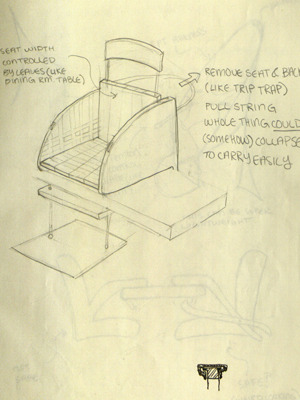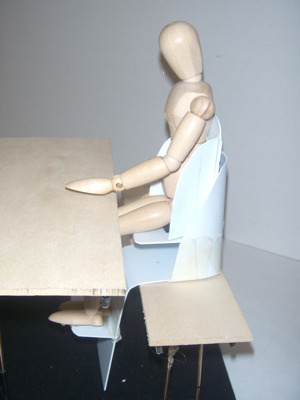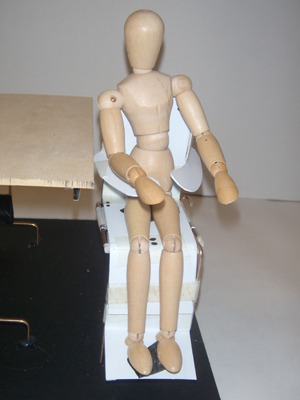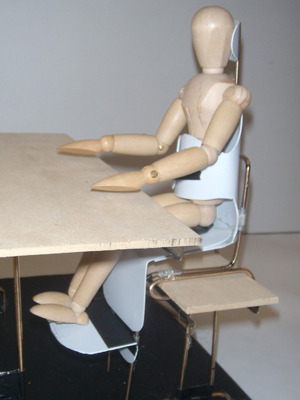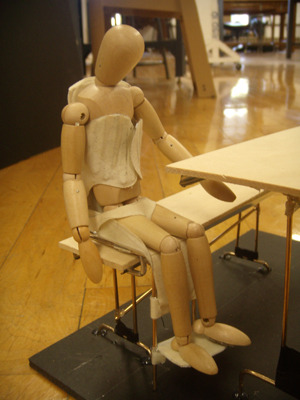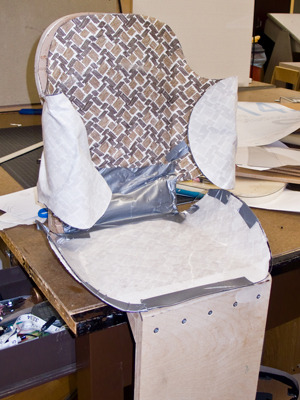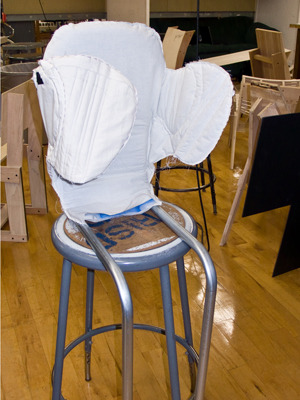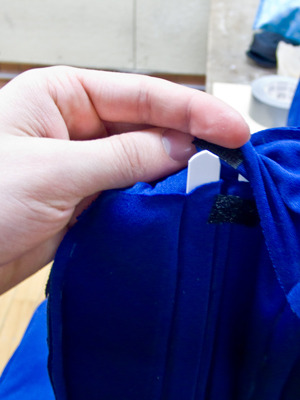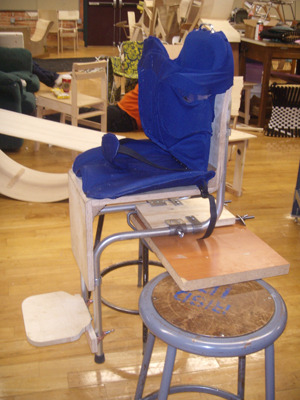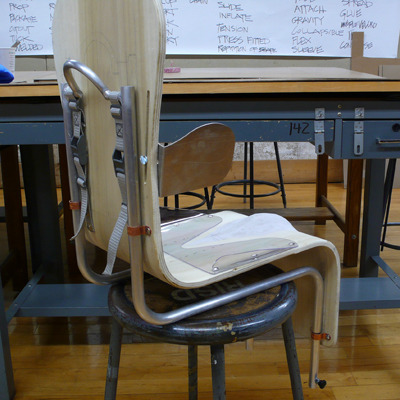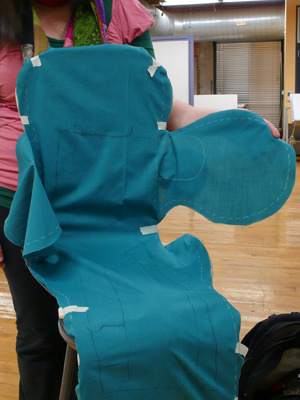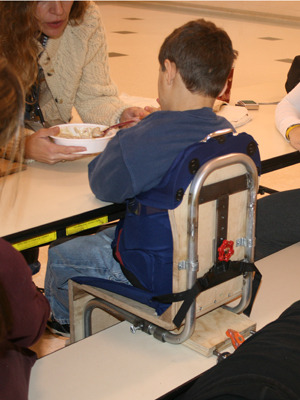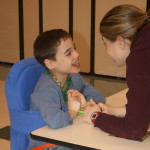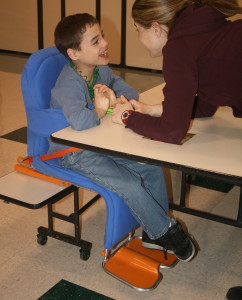— About this Project —
Hug chair is a seating system for Garrett, a child with a physical and cognitive disability, to participate in lunch with his classmates. The design provides soothing sensory input to help Garrett keep his body calm and safe while reducing the ned for rigid postural supports. I designed it to look friendly and approachable for Garrett’s peers.
— Background —
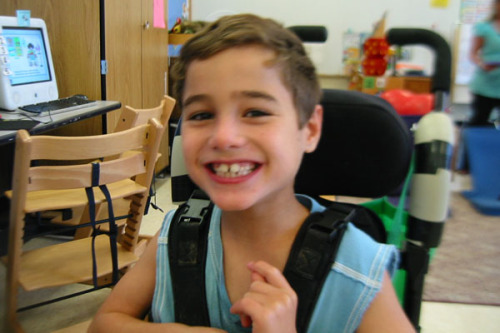

In the cafeteria there is nowhere for Garrett to sit in his wheelchair.
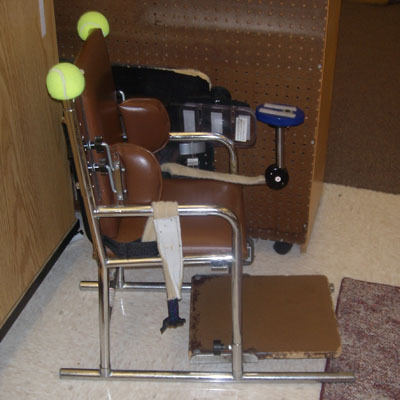

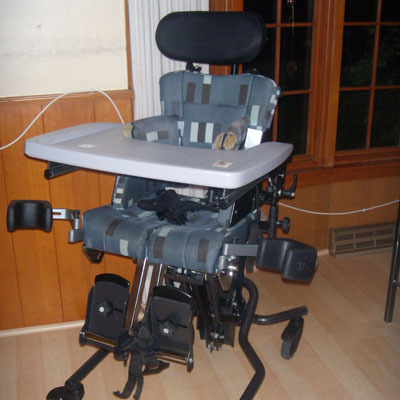

The height, footrests and chest supports are adjustable. There is flap which tightens around the hips when the seatbelt is tightened, a pommel and crotch strap for stability, and the seat moves forward to bring Garrett closer to the table.

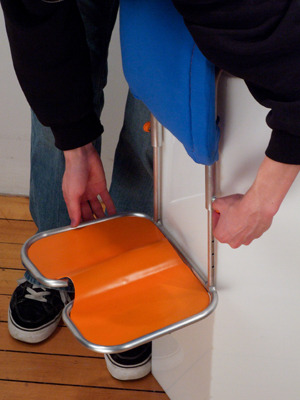
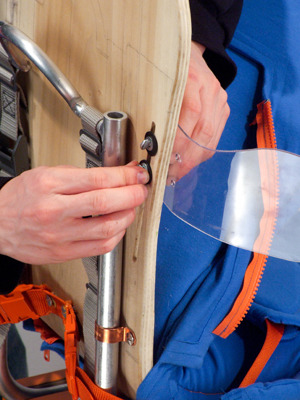
The chair can be used in many settings to help Garrett have access to new areas in the community and at home.


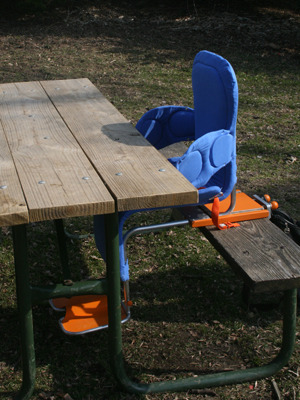
— Process —
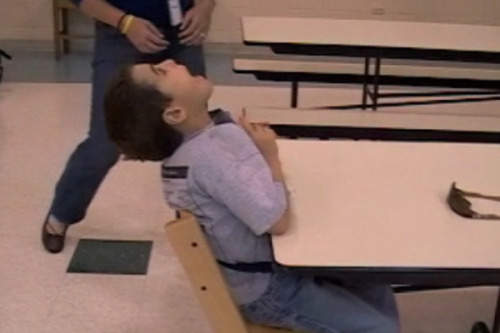
- How can I ask Garrett what he wants, when Garrett does not use words to say what he wants?
- How can research challenge existing perceptions of what is right?
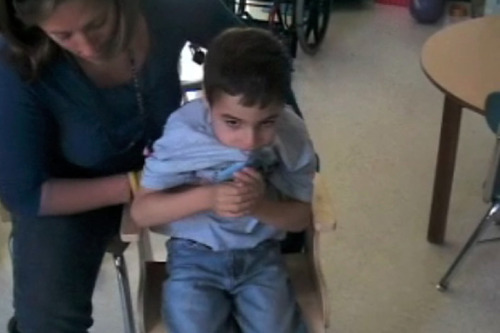

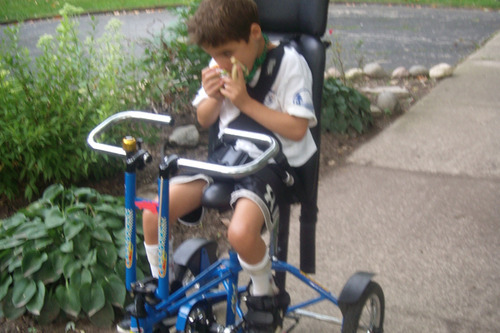
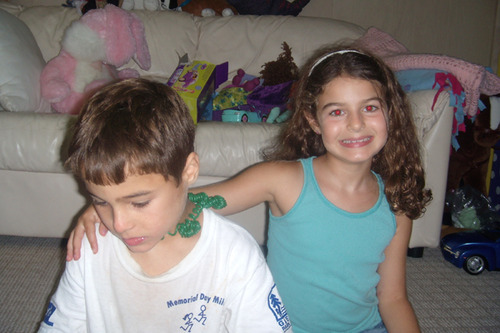
From a video of Garrett using many different available alternatives, I learned that his body is rarely calm enough for him to sit safely without his feet, lap and upper body secure. Initially, it was very important to his therapists not to secure his upper body. Opening their minds took creative approaches to research.
To learn how to tell if Garrett was comfortable I explored Garrett’s behavior in other settings, and I interviewed his family, therapists, teachers and peers.
Here are some of the images and ideas that inspired my design:
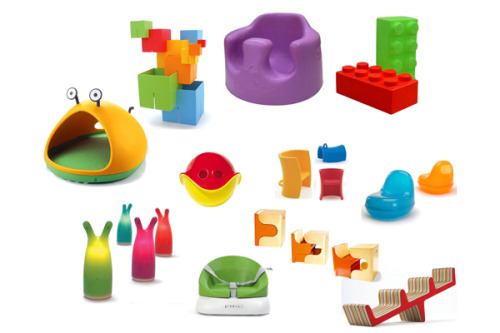
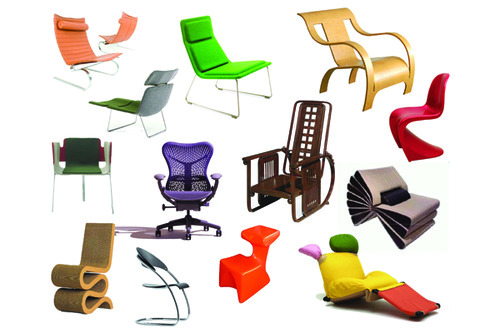
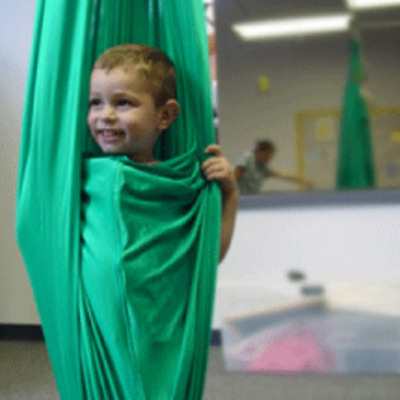


In order to organize the huge amount of information that came out of the research phase of the project, and to communicate better with Garrett’s team I put together this chart describing what I’d found and how I wanted to move forward. It turned out to be very helpful, because often when discussing the project with people who were not as involved as me, it was important for me to be able to quickly catch them up and help them understand the issues.
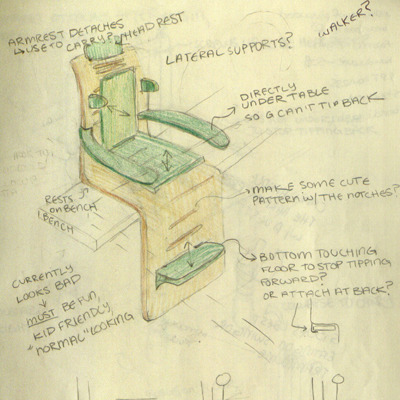
I began with sketches and models using tiny Garrett, so I could explore lots of ideas. During research I observed that Garrett moves his body less when he has sensory stimulation around his trunk. I experimented with a flexible wrap instead of rigid sides to offer him sensory input and calm his body movement. This ended up being the big discovery upon which the design is based, and I incorporated an elastic chest wrap instead of rigid side supports in the prototype to test with Garrett.
